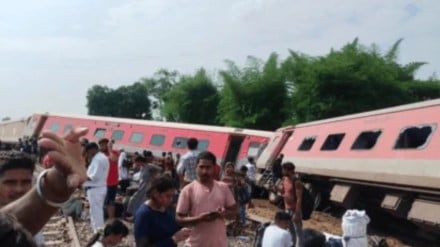A team of five senior railway officials who have been probing the Chandigarh-Dibrugarh Express’ derailment have found that improper fastening of rail track was behind the accident, PTI reported citing sources. However, one member of the panel differs on the matter.
“The fastening of rail track was not proper due to which fastening was working ineffectively,” the report said.
Besides this, the Chief Public Relations Officer of the North Eastern Railway Zone said that coming to any conclusion based on the joint probe report was wrong.
“The investigation by the Commissioner of Railway Safety (CRS) has already started and the first hearing took place on Friday. It will go into the details of every aspect of the accident with technical specifications and minute details. Many crucial things don’t come in the joint probe so it is very premature,” the CPRO said.
IMR defect detected
The team probing the incident found that the senior section engineer at the Lucknow division found an immediate removal defect (IMR) defect at 1:30 pm and the Chandigarh-Dibrugarh Express crossed Motiganj station at 2.28 pm.
According to reports, at 2:30 pm, the station master of Motiganj received a memorandum to impose a speed restriction of 30 km/h for trains crossing the defective spot. However, the derailment occurred at 2:31 pm when the engine passed over the defective area.
“When IMR was detected (at 1.30 pm), the site should have been protected till the caution order was served but it was not done due to which the train derailed. The engineering department is responsible for it,” the joint probe said.
Representing the engineering department, a senior railway officer said he disagreed with the joint report. He also gave several reasons, one being measurement of the track and alleged improper fastening was done in his absence, PTI reported..
The officer stated that it was incorrect to conclude that the site was unprotected because the IMR spot was completely intact and was not the cause of the derailment.
The officer claimed that the other members of the joint probe team denied his request for various technical assessments, including wheel measurements, buffer height, and coupling of parcel vans. He concluded that the train derailed due to improper braking by the loco pilot.
The joint probe team provided details of the accident as recorded in the train crew’s statements.
